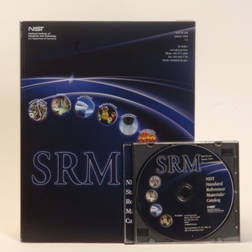Before we had blogged on the importance of metrology and uncertainty reporting as well as advancing (or rather inching) towards ISO 17025. Part of the integrity of any sort of testing of unknowns has to do with the veracity of the sources of knowns against which the unknowns are compared. For if we do not have certainty in our knowns and our references, then there cannot be any confidence in our conclusions of the analysis of unknowns.
In a well-run forensic lab this need for certified and true standards or knowns is solved by using something that is called Certified Reference Materials (CRMs). The International Standards Organization (ISO) has established guides to govern CRMs. These include:
- ISO Guide 35: 1989 – Certification of reference materials – General and statistical principles
- ISO Guide 31: 2000 – Contents of certificates & labels of reference materials
- ISO Guide 33: 1989 – Uses of certified reference materials
- ISO Guide 34: 2000 – General requirements for the competence of reference material producers
NIST provides a service that includes over 1300 Standard Reference Materials (r) or SRMs. There is also the NIST 08 library which replaces the NIST 05 library.
NIST 08 is not just a mass spectral library. It contains these components:
- (UPDATED) Electron ionization (EI) mass spectral library – 220,460 spectra of 192,108 unique compounds, with identifications and usually chemical structures. You may search names of compounds online.
- (UPDATED) MS/MS library – 14,802 spectra of 5,308 precursor ions (3,898 cations and 1,410 anions).
- (UPDATED) Gas Chromatography (GC) data library – 224,038 Kovats retention index values for 21,847 compounds in the EI library, now on both polar and non-polar columns. Includes retention indices with GC column conditions and literature citations.
- (UPDATED) NIST MS Search software – software for searching (identifying) compounds from their mass spectra and for browsing mass spectral libraries. Also includes MS interpretation programs for analyzing mass spectra on the basis of chemical structure, molecular formula, isotopic patterns, and more.
- (UPDATED) AMDIS software – software for deconvoluting gas/liquid chromatograms
- (UPDATED) Documentation – Approximately 50 page printed and electronic manual on setup and basic usage. Additional information is in the help files.
Libraries are formatted the binary format suitable for use alone or by the NIST MS Search software (and AMDIS). Additional instrument-specific formats (e.g., Agilent ChemStation) are available separately to permit library searching directly within the GC/MS or LC/MS data system.

Another source of CRMs are:
- COMAR, which has nearly 11,ooo CRMs from about 220 producers in 25 countries,
- Sigma Aldrich, which has well over 500 CRMs,
- AAFS Drug Library 2010 which contains 2700 pure drug spectra,
- Mass Spectral and GC Data of Drugs, Poisons, Pesticides, Pollutants and Their Metabolites, which is commonly referred to as Pfleger 2007


